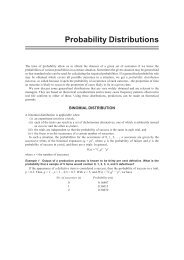International-Business-Dr-R-Chandran-E-book
International-Business-Dr-R-Chandran-E-book
International-Business-Dr-R-Chandran-E-book
You also want an ePaper? Increase the reach of your titles
YUMPU automatically turns print PDFs into web optimized ePapers that Google loves.
127<br />
<strong>International</strong> <strong>Business</strong>- <strong>Dr</strong>. R. <strong>Chandran</strong><br />
distribution give advantages to existing firms and impose barriers against<br />
newcomers.<br />
Due to these and other imperfections, firms locate their production and<br />
other operations internally. As these market imperfections disappear, the<br />
importance of MNCs may diminish. The days for this may not be far off due<br />
to the international apex body, WTO and its regulatory norms are strictly<br />
implemented in near future.<br />
TRANSFER PRICING<br />
Transfer prices are the charges made when a company supplies goods,<br />
services or finance to another company to which it is related. It is an<br />
internationally accepted principle that transactions between related parties<br />
should be based upon the same terms as those between unrelated parties.<br />
Thus both tax treaties entered into between countries and domestic tax<br />
legislation of various countries have adopted the arm’s length principle.<br />
Abuse of Transfer Pricing<br />
In the era of global competition transfer pricing has became an unwanted<br />
reality. The price charged by a company in Country A to another company<br />
in Country B is reflected in the profit and loss account of both the<br />
companies, either as income or expenditure, and impacts the tax paid by the<br />
two related companies. By resorting to transfer pricing, related entities can<br />
reduce their total taxation by transferring higher income to low-tax<br />
jurisdictions and greater expenditure to those jurisdictions where the tax rate<br />
is very high. For example, the current tax rate on domestic companies in<br />
India is 33.3%. Take an example, the Company A is located in India and<br />
Company B in Singapore, and that both belong to the same group. If the tax<br />
rate in Singapore is 15% then Company B will transfer raw material to<br />
Company A at slightly higher prices. This will enable Company A to show a<br />
higher expenditure and reduce its taxable profits. On the other hand, a<br />
slightly higher income will not harm Company B much as the tax rate in its<br />
country is very low, thus the global group as a whole will benefit form tax<br />
savings. In this game, the first country is the major loser and due to low<br />
profits employees may struggle for their incentives.<br />
Detection of Transfer Pricing<br />
Only for Private Circulation





